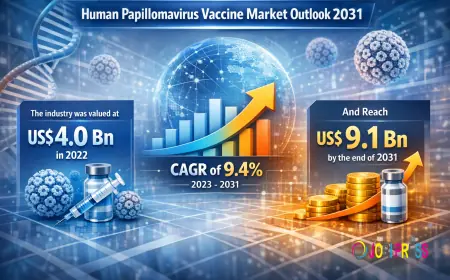Manufacturing Portal Development: What to Prioritize for 2026 and Beyond
Discover the top priorities for manufacturing portal development in 2026 and beyond—from ERP integration and dealer self-service to mobile access and compliance-ready architecture.

Global supply chains are more interconnected—and more fragile—than ever. For manufacturers, the pressure to digitize isn't optional; it's operational survival. Yet too many manufacturers still rely on email threads, spreadsheets, and legacy systems to communicate with distributors, vendors, and customers. As we look ahead to 2026 and beyond, the conversation isn't just about going digital—it's about building smarter, scalable portals that serve the entire manufacturing ecosystem.
Manufacturing portal development is no longer just an IT initiative. It’s a cross-functional transformation tool that enhances visibility, compliance, and speed across your entire value chain.
So, what should your team prioritize as you plan your next-generation manufacturing portal? Here's what to focus on:
1. Dealer and Vendor Self-Service as a Default
Manual interactions kill scale. In 2026 and beyond, your manufacturing portal must support fully self-service workflows for:
-
Dealer onboarding
-
Product catalog access
-
Purchase order submissions
-
Warranty claims
-
Inventory visibility
The more your partners can do without emailing your internal teams, the more scalable and resilient your operations become.
2. ERP and CRM Integration for Real-Time Data
Standalone portals are dead weight. A modern manufacturing portal must integrate tightly with your existing ERP (like SAP, Oracle, NetSuite) and CRM (like Salesforce or Dynamics 365) systems.
This ensures that:
-
Order statuses update in real-time
-
Customer and dealer profiles stay in sync
-
Product availability reflects actual inventory
The result: fewer delays, fewer errors, and faster transactions.
3. Document Management with Lifecycle Tracking
Manufacturing runs on documentation: safety certificates, compliance forms, product manuals, invoices. Your portal should become the single source of truth for all critical documents.
Must-have features include:
-
Version control
-
Expiry notifications
-
Secure sharing and downloads
-
E-signature integration
This isn’t just about convenience. It’s about compliance, audit readiness, and trust.
4. Multi-Role Access with Granular Security
Your portal will serve distributors, field agents, suppliers, and customers. Each needs access to different data. Implement role-based access controls (RBAC) and field-level security to ensure:
-
Distributors see their own inventory and order history
-
Vendors access purchase orders but not pricing for other partners
-
Field reps can submit service logs but not access financials
Scalable security is non-negotiable.
5. Product Configurators and Quoting Tools
In high-mix manufacturing, one of the biggest delays is quoting. If your portal doesn’t allow dealers or customers to configure and price products themselves, you’re wasting sales cycles.
Modern portals should include:
-
Guided product selection (CPQ)
-
BOM generation
-
Instant pricing calculations
-
Integration with sales or procurement teams
6. Warranty and RMA Management
One of the most painful areas in manufacturing support is warranty handling and return merchandise authorization (RMA).
A robust portal should allow users to:
-
Register products
-
Initiate warranty claims
-
Upload proof of purchase or defect
-
Track claim status
Automating this process reduces friction and helps you analyze product issues at scale.
7. Analytics Dashboards for Partners and Internal Teams
Data is only useful if it’s visible. Equip your portal with dashboards that provide:
-
Dealers: Sales trends, stock levels, order turnaround time
-
Vendors: PO statuses, quality ratings, SLA compliance
-
Internal teams: Portal usage metrics, partner performance
Real-time dashboards build transparency and accountability across the board.
8. Mobile-First, Offline-Capable Interfaces
Manufacturing operations don’t stop at the office. Field reps, technicians, and partners often need access on the move—sometimes in low-bandwidth environments.
Your portal should be:
-
Mobile-responsive by design
-
Capable of offline data entry (with auto-sync)
-
Touch-optimized for tablets and rugged devices
9. Compliance-Ready and Secure by Design
Whether you're dealing with ISO standards, GDPR, or sector-specific compliance requirements, your portal must be:
-
Encrypted end-to-end
-
Audit-logged for every interaction
-
Equipped with automated data retention policies
This is especially critical when handling technical documentation, product recalls, or customer data.
10. Scalable Architecture for New Business Models
Tomorrow's manufacturing might include:
-
Subscription-based equipment leasing
-
Predictive maintenance with IoT data
-
Customer-driven co-design and rapid prototyping
Your portal architecture must be modular, API-ready, and future-proof to support these evolving models.
Final Thoughts
Manufacturing portal development is about more than digital forms. It’s about building a secure, connected, and role-aware ecosystem that reduces operational load, improves partner satisfaction, and enables strategic agility.
If you're planning for 2026 and beyond, prioritize self-service, integration, data visibility, and mobile access. Your portal should not only reflect how your business works today—it should enable how you'll grow tomorrow.
What's Your Reaction?
 Like
0
Like
0
 Dislike
0
Dislike
0
 Love
0
Love
0
 Funny
0
Funny
0
 Angry
0
Angry
0
 Sad
0
Sad
0
 Wow
0
Wow
0





















































